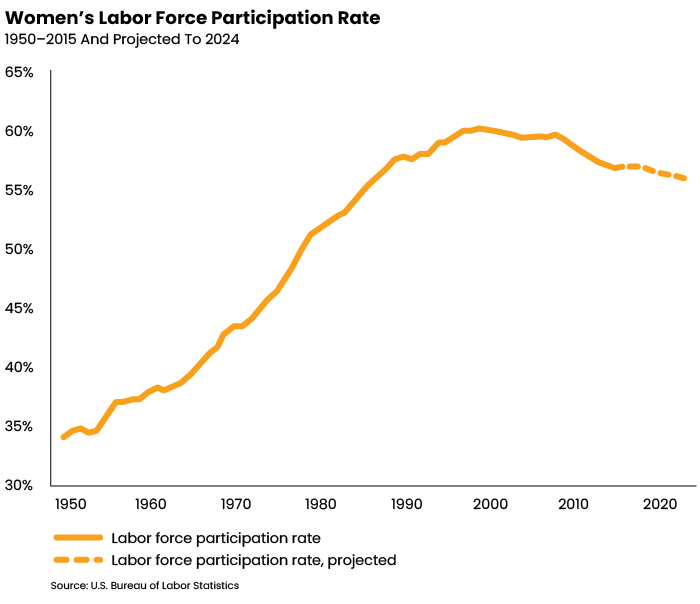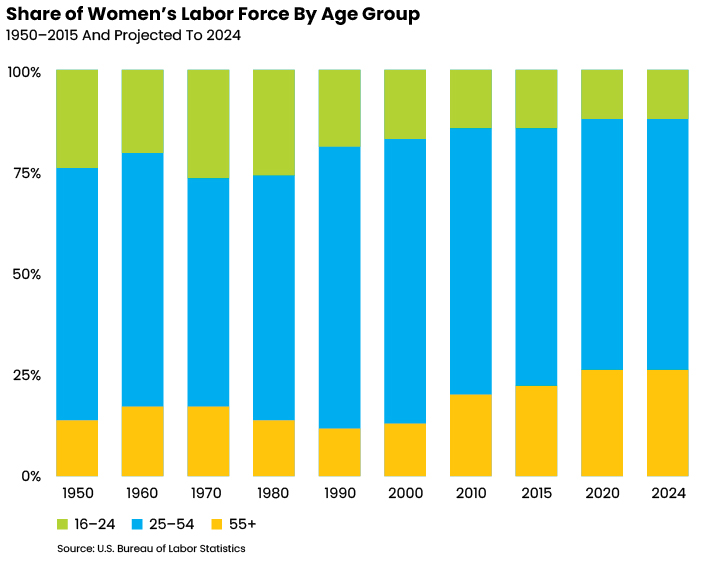Late last year, for example, research led by a team from the UCLA Fielding School of Public Health found that the average rate of decline on memory-test scores for women after age 60 was much slower for those who worked in the paid labor force in early adulthood and middle age vs. women who had not done so. The study results translated into an average rate of memory decline that was more than 50% greater among women who did not work for pay after having children than among mothers who worked.
“We found the timing of labor force participation did not appear to matter,” said study author Elizabeth Rose Mayeda, a UCLA assistant professor of epidemiology, in a press release on the study. “Rates of memory decline were similar for married working mothers including those who consistently worked, those who stayed home for a few years with children as well as those who stayed home many years before returning to the workforce, suggesting that the benefits of labor force participation may extend far into adulthood.”
 If one looks at labor force participation rates of women over decades, it’s easy to see how women who are baby boomers (born from 1946-1964) and younger might not face as high rates of dementia as they age compared with women who are 80 and older today. According to the U.S. Bureau of Labor Statistics, the labor force participation rate of women was 33.9% in 1950, 46.3% in 1975, 57.5% in 1990 and 56.7% in 2015. In 1950, the 18.4 million U.S. women in the labor force represented one-third of the total; by 2015, women numbered 73.5 million workers and were 46.8% of the overall labor force.
If one looks at labor force participation rates of women over decades, it’s easy to see how women who are baby boomers (born from 1946-1964) and younger might not face as high rates of dementia as they age compared with women who are 80 and older today. According to the U.S. Bureau of Labor Statistics, the labor force participation rate of women was 33.9% in 1950, 46.3% in 1975, 57.5% in 1990 and 56.7% in 2015. In 1950, the 18.4 million U.S. women in the labor force represented one-third of the total; by 2015, women numbered 73.5 million workers and were 46.8% of the overall labor force.
The study is a particularly encouraging sign for women, given that women are diagnosed with dementia more often than men. It’s not conclusive whether women actually have a higher incidence of dementia, although when gender differences are observed regarding dementia it tends to be later in life.
Other research also suggests dementia may not be a threat to as high a percentage of U.S. residents as in the past. In August, a study led by researchers at Harvard T.H. Chan School of Public Health found that over the past 30 years, the incidence of dementia has declined an average of 13% every decade in people of European ancestry living in the U.S. and Europe.
The researchers estimate that 15 million fewer people could develop dementia by 2040 in high-income countries if that trend continues, said a Harvard press release.
The release went on to say that “the reasons for the decreased incidence are not clear, although several medical interventions that influence blood pressure, cholesterol, and inflammation may have contributed.”
Dorothy Hinchcliff is publisher of Rethinking65. Please reach out to her at dhinchcliff@rethinking65.com with your ideas for contributions to www.rethinking65.com.







